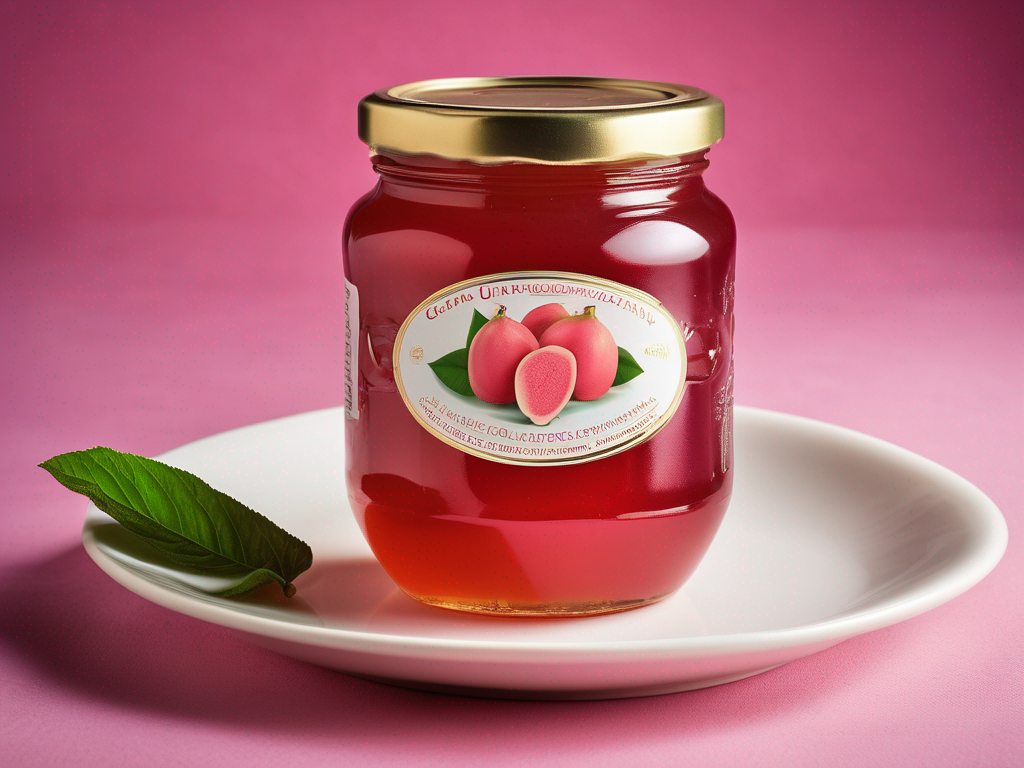
The Best Storage Practices for Guava Jelly Commercially Jarred Unopened
Get Your Free Food Safety Cheat Sheet
30 most common foods with instant answers. Print it and stick it on your fridge—completely free!
The Best Storage Practices for Guava Jelly Commercially Jarred Unopened
Guava jelly is a delightful and flavorful spread that can be enjoyed on toast, pastries, or used in various recipes. When commercially jarred and unopened, it is essential to store guava jelly properly to maintain its freshness, flavor, and quality. In this blog post, we will discuss the best storage practices for guava jelly that is commercially jarred and unopened. (Guava jelly commercially jarred unopened)
Importance of Proper Storage
Proper storage of guava jelly is crucial to ensure its longevity and prevent spoilage. By following the correct storage practices, you can maintain the quality and taste of the jelly for an extended period. Improper storage can lead to flavor loss, texture changes, and potential contamination, compromising the safety and enjoyment of the product.
Factors Affecting Guava Jelly Storage
Several factors can impact the storage of guava jelly, including:
- Temperature fluctuations
- Exposure to light
- Moisture levels
- Air exposure
Understanding these factors is essential in determining the best storage practices to preserve the quality of the guava jelly over time.
Best Storage Practices
1. Store in a Cool, Dark Place
-
Cool Temperature: Store the jar of guava jelly in a cool, dark place away from direct sunlight and heat sources.
-
Consistent Temperature: Avoid storing the jelly in areas prone to temperature fluctuations, such as near stoves or windows.
2. Keep the Jar Sealed
-
Tightly Sealed Lid: Ensure that the jar is tightly sealed to prevent air exposure and moisture from entering.
-
Check Seal: Before storing, check the lid for any damage or signs of tampering to maintain the jelly's freshness.
3. Avoid Moisture Exposure
-
Dry Environment: Store the guava jelly in a dry environment to prevent moisture buildup, which can lead to mold growth.
-
Refrain from Refrigeration: Unless specified on the label, avoid refrigerating unopened guava jelly to maintain its consistency and flavor.
4. Check Expiry Date
-
Follow Expiry Date: Always check the expiry date on the jar and consume the guava jelly before it expires for the best quality.
-
Rotate Stock: If you have multiple jars, use the first-in, first-out method to ensure you consume the oldest jar first.
Safety Precautions
1. Inspect the Jar
- Check for Damage: Before storing, inspect the jar for any cracks, leaks, or bulging lids, as these can indicate spoilage.
2. Handle with Clean Hands
- Clean Hands: When handling the jar, make sure your hands are clean to prevent contamination.
3. Avoid Cross-Contamination
- Use Clean Utensils: When scooping out the jelly, use clean utensils to prevent cross-contamination.
4. Store Away from Contaminants
- Keep Away from Strong Odors: Store guava jelly away from strong-smelling foods to prevent flavor absorption.
Conclusion
In conclusion, proper storage practices are essential for maintaining the freshness and quality of commercially jarred and unopened guava jelly. By storing the jelly in a cool, dark place, keeping the jar sealed, avoiding moisture exposure, and following safety precautions, you can enjoy the delicious taste of guava jelly for an extended period. Remember to check the expiry date, handle the jar with care, and store it away from contaminants to ensure a safe and enjoyable culinary experience.
By following these guidelines, you can savor the delightful flavor of guava jelly while ensuring food safety and quality. [Guava jelly commercially jarred unopened](/food/guava jelly commercially jarred unopened) is a versatile and tasty ingredient that, when stored correctly, can enhance your culinary creations for months to come. (Guava jelly commercially jarred unopened)
Authoritative Food Safety References
These agencies and university labs inform every tip and health precaution we publish.
USDA FoodKeeper – Cold Storage Guidelines
Official refrigerator, freezer, and pantry timelines maintained by the U.S. Department of Agriculture.
Visit USDA FoodKeeperFDA Produce Safety Rule & Grower Guidance
Field-to-fridge handling practices that prevent contamination of fruits, vegetables, and leafy greens.
Visit FDA Produce SafetyCDC Foodborne Illness Prevention Hub
Surveillance-backed guidance on pathogens, symptoms, and steps to reduce foodborne illness risk.
Visit CDC Food SafetyUC Davis Postharvest Technology Center
University research detailing optimal storage atmospheres for produce after harvest.
Visit UC Davis PostharvestPenn State Extension – Home Food Preservation & Safety
Peer-reviewed extension bulletins on safe canning, chilling, and reheating practices.
Visit Penn State ExtensionGet Your Free Food Safety Cheat Sheet
30 most common foods with instant answers. Print it and stick it on your fridge—completely free! Want more? Upgrade to the complete guide with 70+ foods.
Scan your food directly and get instant safety info using our AI-powered camera feature.